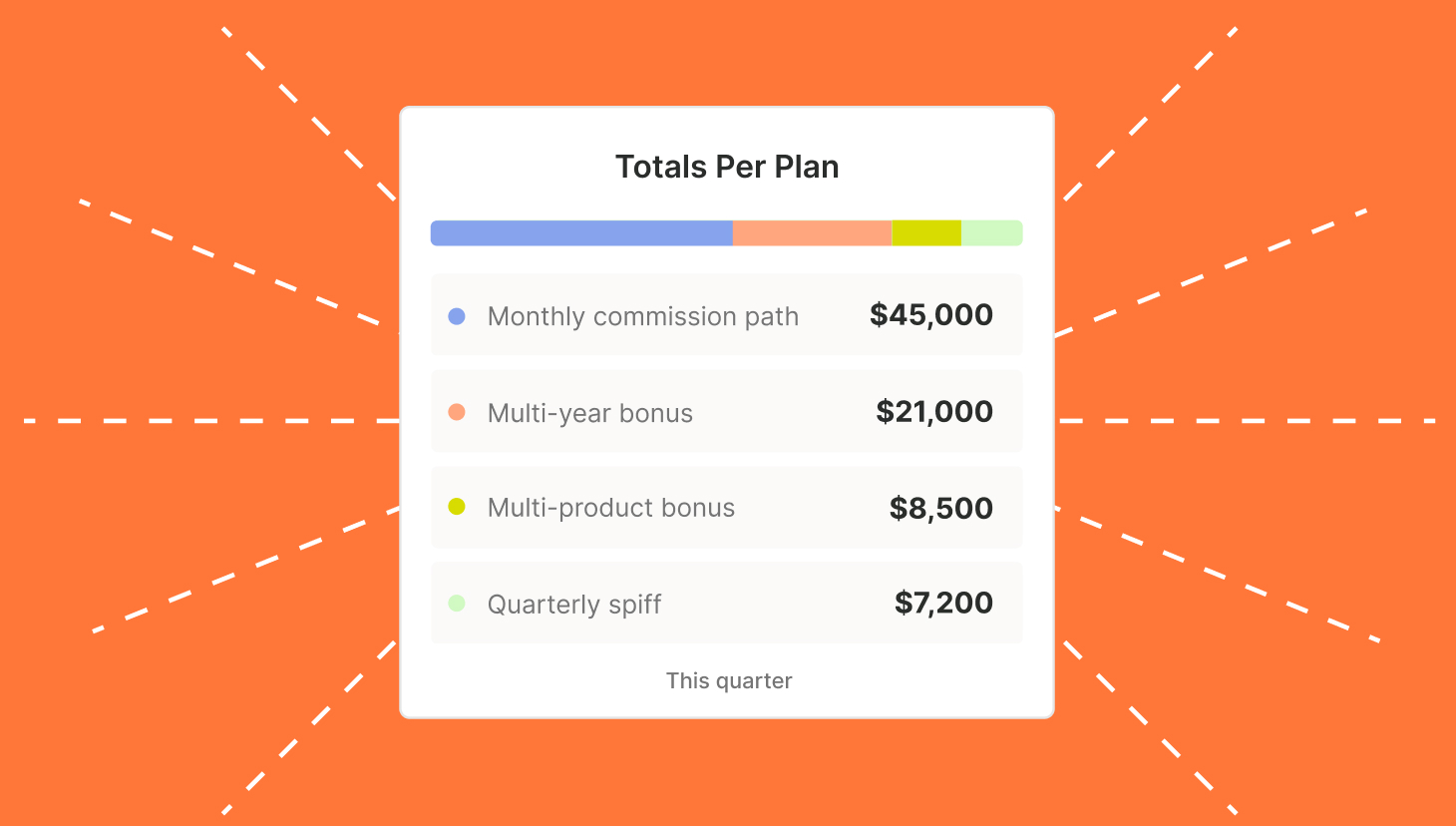Instilling a culture of financial accountability amongst your employees is good for business.
So much so, that a study conducted by the Aberdeen Group found that companies with strong financial accountability practices experience 21% higher profitability compared to those without. This suggests a clear link between financial awareness and improved efficiency.
Empowering employees to be financially accountable also helps them align their work with the business’s goals, making it more likely to achieve said goals. Additionally, financial accountability increases transparency within your organization and, therefore, trust.
When your team understands the financial impact of their decisions, they’re more likely to make choices that benefit the company’s bottom line. This can range from minimizing waste and maximizing resource utilization to focusing efforts on tasks (and sales) with the highest return on investment.
Financial accountability isn’t just about saving money, it’s about building a more engaged and effective workforce, which translates to better decision-making, increased efficiency, and a more positive work environment.
In this blog, we’ll explore 7 strategies to build financial accountability among employees, improve financial transparency, and achieve your revenue goals together.
What is Financial Accountability?
Financial accountability refers to the responsibility to take ownership of financial actions and decisions and to be answerable for the consequences.
In the context of a business and its employees, financial accountability means:
- Understanding Financial Impact: Employees are aware of how their actions and decisions affect the company’s finances. This could involve understanding the costs associated with tasks, the value generated by their work, or the impact of waste and inefficiencies.
- Making Responsible Choices: Employees make informed decisions that consider the financial implications. This might involve prioritizing tasks that deliver the highest value, minimizing resource waste, or identifying cost-saving opportunities.
- Transparency and Communication: There’s open communication about financial matters. Employees understand the company’s financial goals and how their work contributes to achieving them.
7 Best Practices to Increase Employee Financial Accountability
There are many best practices for cultivating financial accountability within your organization, but we’ve selected five that we’ve found most effective.
Regularly Communicate Revenue & Retention Targets
First and foremost, your leadership should consistently communicate the organization’s key business goals, and progress toward those.
Transparency fosters trust and empowers employees to see the bigger picture. When everyone understands the company’s strategic objectives, they can better align their individual efforts and make informed decisions that contribute to overall success.
Regular updates on progress towards goals, whether positive or negative, keep everyone engaged and motivated. This open communication loop ensures everyone is rowing in the same direction, ultimately leading to a more financially accountable and successful organization.
- Transparency and Alignment: Make sure everyone in the company understands the revenue and retention targets, and how their individual roles contribute to achieving them.
- Regular Tracking and Communication: Regularly monitor progress towards these targets and communicate updates to the team. This fosters a sense of shared ownership and accountability.
- Weekly Meetings: Consider holding regular meetings (weekly, bi-weekly, or monthly depending on your company’s pace) to discuss financial performance, upcoming goals, and potential challenges. This fosters open communication and keeps everyone aligned.
- Actionable Outcomes: End meetings with clear action items and assigned responsibilities. This ensures accountability and helps track progress towards achieving financial objectives.
Goal Tracking
Once you’ve established clear targets and fostered transparency around them, it’s crucial to equip your employees with the tools they need to track progress. This empowers them to take ownership of their goals and fosters a sense of healthy competition.
Tailored Tracking for Different Teams:
- Go-to-Market Teams: For teams on incentive pay, tools like QuotaPath offer valuable insights. Real-time and forecasted earnings data allows them to see their impact on the bottom line and adjust strategies accordingly. This fosters a results-oriented mindset and motivates them to achieve financial targets.
- Non-Incentive Teams: Alternative methods can be implemented for teams without incentive plans. Gamification—incorporating game mechanics like points, leaderboards, and badges—can inject a fun element into goal tracking and encourage friendly competition.
Data Visualization:
Another powerful tool is data visualization. Interactive dashboards and reports allow employees to see progress visually, understand their position relative to goals, and identify any potential roadblocks. This transparency empowers them to make data-driven decisions and course-correct as needed.
By providing a variety of goal-tracking methods, you cater to different learning styles and preferences within your workforce. Ultimately, the goal is to ensure everyone has a clear understanding of their progress and how it contributes to achieving the company’s financial objectives.

How to Align Your Comp Plans to North Star Metrics
Business efficiency metrics, such as profitability and line of sight to cash flow, are a top priority for most SaaS companies and startups.
Take Me to BlogAlign Compensation with Financial Performance
Next, align your compensation plans with financial performance to create a powerful incentive for employees to prioritize the company’s bottom line.
It sounds like a no-brainer, but in our report, we found that 39% of leaders failed to align their compensation plans with targets.
Here are two key strategies to consider:
- Performance-Based Incentives: Implementing performance-based bonuses or commissions directly ties employee rewards to achieving financial goals. This fosters a results-oriented mindset and motivates employees to make decisions that contribute to financial success. When employees see a clear link between their efforts and their compensation, they’re more likely to go the extra mile and become financially invested in the company’s well-being.
- Profit-sharing: Profit-sharing programs offer another compelling approach. By giving employees a stake in the company’s financial success, you create a sense of ownership and a shared destiny. This fosters a collaborative environment where everyone is working towards the same goal – maximizing profits. Employees become more mindful of responsible resource allocation and cost-saving measures, as their own financial well-being is directly tied to the company’s profitability.
By implementing these strategies, you can create a win-win situation.
Employees feel valued and motivated by their compensation structure, while the company benefits from a more financially accountable workforce that’s driven to achieve financial
Create Compensation Plans with confidence
RevOps, sales leaders, and finance teams use our free tool to ensure reps’ on-target earnings and quotas line up with industry standards. Customize plans with accelerators, bonuses, and more, by adjusting 9 variables.
Build a Comp PlanRely on RevOps as Data Storytellers
Our recommendation is that you lean on your data storytellers to share past performance, progress, and projections.
AKA: RevOps.
Meeting Frequency
The ideal frequency for these data-driven communication sessions (often referred to as MBRs – Monthly Business Reviews) depends on your company’s pace.
Fast-Paced Startups: For dynamic startups, weekly MBRs might be necessary to keep everyone informed and aligned with rapidly evolving financial targets.
Slower-Moving Companies: For slower-moving businesses, bi-weekly or monthly MBRs could be sufficient to ensure clear communication and progress updates on financial performance.
Slower-Moving Companies: For slower-moving businesses, bi-weekly or monthly MBRs could be sufficient to ensure clear communication and progress updates on financial performance.
RevOps teams are uniquely positioned for this role as the translator, transforming raw data into a clear and compelling story for the entire company. They often oversee the setup and monitoring of performance metrics for Go-to-Market (GTM) teams, giving them a comprehensive understanding of the data that drives financial success.
By leveraging their expertise, you can:
- Communicate Target Setting: RevOps can explain the reasoning behind target setting, highlighting factors like market trends, historical performance, and competitor analysis. This transparency builds trust and empowers employees to see the bigger picture.
- Showcase Past Performance: RevOps can present past performance data in a clear and concise format, allowing employees to understand the company’s financial trajectory. This historical context helps them see their individual contributions within a broader framework.
- Project Future Performance: Using current performance data and market insights, RevOps can provide financial projections and forecasts. This empowers employees to anticipate future challenges and opportunities and make data-driven decisions aligned with the company’s financial goals.
Relying on RevOps as data storytellers can foster a culture of transparency and empower your employees to make financially responsible decisions that drive the company’s success.
Featured Reading
How Employees (and Employers) Should Approach Startup Equity Compensation
Take Me to BlogShare Budget, Runway (if applicable)
Another best practice is to share the budget at the department or team levels and, when applicable, your organization’s runway and valuation with the entire company.
Budget Talks: Sharing the budget empowers employees to understand the financial constraints the company operates under. This allows them to make informed decisions that align with financial goals and avoid unnecessary spending. Visualizations like charts and graphs can make budget information clear and easy to understand for everyone, regardless of their financial background.
Runway Clarity: If your company is a startup, consider sharing runway information. This helps employees understand how long the company can operate with existing cash flow before needing additional funding.
Be sure to clearly define what the runway represents, such as the number of months the company can continue operations.
Valuation Transparency: Striking a balance between transparency and sensitivity is key when considering valuation. While sharing a specific valuation figure can be sensitive, focusing on growth metrics and overall company health can paint a clear picture of the company’s financial well-being.
Employees can gain valuable insights into the company’s trajectory without being privy to potentially confidential valuation details.
By openly sharing relevant financial information, you empower your employees, build trust, and encourage responsible financial decision-making throughout the organization. This transparency fosters a sense of ownership and motivates employees to contribute to the company’s continued financial success.
Streamline commissions for your RevOps, Finance, and Sales teams
Design, track, and manage variable incentives with QuotaPath. Give your RevOps, finance, and sales teams transparency into sales compensation.
Talk to SalesLeverage Technology for Financial Visibility
We’ve mentioned some tools above that can help in this arena, including QuotaPath and data visualization platforms (we use Mode, for example). Some other ones to consider include:
- Financial Reporting Tools: Implement financial reporting tools that provide employees with easy access to relevant financial data. Interactive dashboards with clear visualizations like charts and graphs make the data readily understandable, regardless of an employee’s financial background. This empowers them to see how their daily activities contribute to the company’s financial performance.
- Budgeting Software: Consider implementing budgeting software that allows employees to see how their departmental spending aligns with the overall budget. This transparency fosters a sense of ownership. When employees see the direct impact of their spending decisions, they’re more likely to be mindful of costs and make responsible resource allocation choices. Budgeting software can also empower them to identify areas for potential savings and contribute to overall financial efficiency.
By leveraging technology to democratize access to financial data, you empower your employees and cultivate a culture of financial accountability that drives better decision-making and ultimately fuels the company’s financial success.
Celebrate Achievements and Recognize Effort
Lastly, celebrate!
Financial accountability isn’t just about hitting targets; it’s about creating a culture of continuous improvement and celebrating progress along the way.
Here’s how to acknowledge both achievements and the ongoing journey towards financial responsibility:
- Milestone Celebrations: Reaching financial milestones is a cause for celebration! Publicly recognize and celebrate these achievements. This reinforces the importance of financial responsibility and motivates employees to strive for continued success. Company-wide announcements, team lunches, or bonus awards can all be effective ways to show appreciation.
- Effort and Improvement: The road to financial success isn’t always smooth. Recognize and reward employees who demonstrate a commitment to financial accountability, even if the outcome isn’t perfect. Perhaps an employee identified a cost-saving opportunity or went the extra mile to ensure responsible resource allocation. Praising such efforts reinforces the value of responsible financial behavior and creates a culture of learning from experiences.
By acknowledging both achievements and ongoing efforts, you foster a growth mindset within your organization. Employees feel valued for their contributions, regardless of the final outcome. This motivates them to continuously strive for financial responsibility and contribute to the company’s long-term financial success.
Try QuotaPath for free
Try the most collaborative solution to manage, track and payout variable compensation. Calculate commissions and pay your team accurately, and on time.
Start TrialStart Building Financial Accountability
Financial accountability isn’t a magic trick; it’s a carefully crafted strategy for empowering your employees and fostering a culture of shared financial responsibility. By implementing the practices outlined above, you can create a winning formula for your organization:
- Regularly Communicate Revenue & Retention Targets: Transparency fosters ownership and aligns individual efforts with overall goals.
- Utilize Goal Tracking Methods: Equip employees with tools to see their progress and the company’s trajectory.
- Align Compensation with Performance: Motivate employees by directly linking rewards to achieving financial goals.
- Rely on RevOps as Data Storytellers: RevOps can translate complex data into a clear narrative, fostering understanding and trust.
- Share Budget & Runway (if applicable): Openness builds trust and empowers employees to make informed decisions.
- Leverage Technology for Visibility: Financial reporting tools and budgeting software democratize access to financial data.
- Celebrate Achievements & Recognize Effort: Acknowledge milestones and celebrate the journey towards financial responsibility.
By embracing these practices, you can unlock the full potential of your workforce. Employees who understand the financial landscape, are equipped with the right tools, and feel valued for their contributions become powerful allies in driving your company’s financial success.
So, take the first step today and start building a culture of financial accountability within your organization. The rewards will be well worth the investment.
To learn more about how QuotaPath builds financial accountability over earnings, attainment, and progress toward company targets, talk to our team today or start a free trial.



